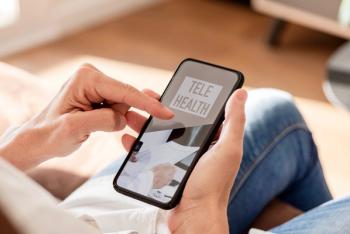
5 ways texting makes telehealth simpler and more effective
Social distancing is shining a light on telehealth initiatives.
The healthcare industry is faced with an existential threat to its traditional business model because of COVID-19.
Healthcare has always been a bricks and mortar industry built around face-to-face interactions. Patients schedule appointments and then show up in person to meet with their physicians or come into facilities for treatments or assessments. COVID-19 has made face-to-face interactions challenging and, for some, very high risk.
Trending:
As a result of social distancing and the need to limit such interactions, there is a sudden spotlight thrust onto telehealth. Telehealth represents an easy and viable way to replicate the face-to face-visit in some instances. Take the Medicare annual wellness visit (AWV), for example. Telehealth enables a physician (or other qualified healthcare professional) to provide a thorough AWV without the need for the patient to physically come into the office. The AWV consult via telehealth is a billable patient interaction. Telemedicine can also be used for virtual home health visits, post-discharge follow-up appointments, and initial patient assessments, to name a few covered services.
Virtual Challenges
While practices and other facility types are working to roll out telehealth services, they are encountering technical, accessibility, and engagement challenges.
To address these challenges, there's no need to get creative. In fact, most patients also have the tool they need to take advantage of telehealth services: the mobile phone.
All of these phones have another important capability: the ability to receive and interact with text messages. Text messaging should be an essential part of any telehealth program.
A Surprisingly Easy Solution
Imagine sending a text message like this to a patient:
MAINSTREET HEALTH: Hi John. Here is a link to your telehealth appointment scheduled for 10am today. Please click on this link to join the telehealth consultation: www.ZoomMTg/Link. Thank you.
Using a text to send a telehealth link to a patient makes telehealth more effective for the following five reasons:
- There is no hardware requirement for the patient. No computer is needed. No camera. No speakers.
- There is no requirement for the patient to have wi-fi access. The mobile phone uses cellular data. People are increasingly migrating to plans with unlimited data.
- The patient does not need to be home and in front of a computer. They can be engaged wherever they are
- There is no learning curve. Most patients know how to use their phone, and most know about FaceTime, Skype, Facebook Messenger or another videotelephony product.
- This entire process requires no hardware for the practice. Two way-texting platforms are SaaS products that only require internet access.
Furthermore,
Read More:
A good texting system will inform you that the patient received the text with the telehealth link in it. Once the patient receives the text, all they need to do is click on the link in the text and this activates the browser on the phone. Once the telehealth system is activated in the web browser, the camera on the phone should be activated automatically.
To summarize: A text has the power to transform a mobile phone into a telehealth tool. During a time when we are looking for solutions that can help ensure the quality of care is as high as possible, telehealth plus texting are two that all practices should strongly consider.
Brandon Daniell is president and co-founder of Dialog Health. He has more than 18 years of business and program development experience in healthcare, having worked with leading employers, physicians, payors and hospital systems. With three private practice physicians in his family, Brandon understands the challenges many practices face concerning patient engagement.
Newsletter
Optimize your practice with the Physicians Practice newsletter, offering management pearls, leadership tips, and business strategies tailored for practice administrators and physicians of any specialty.








